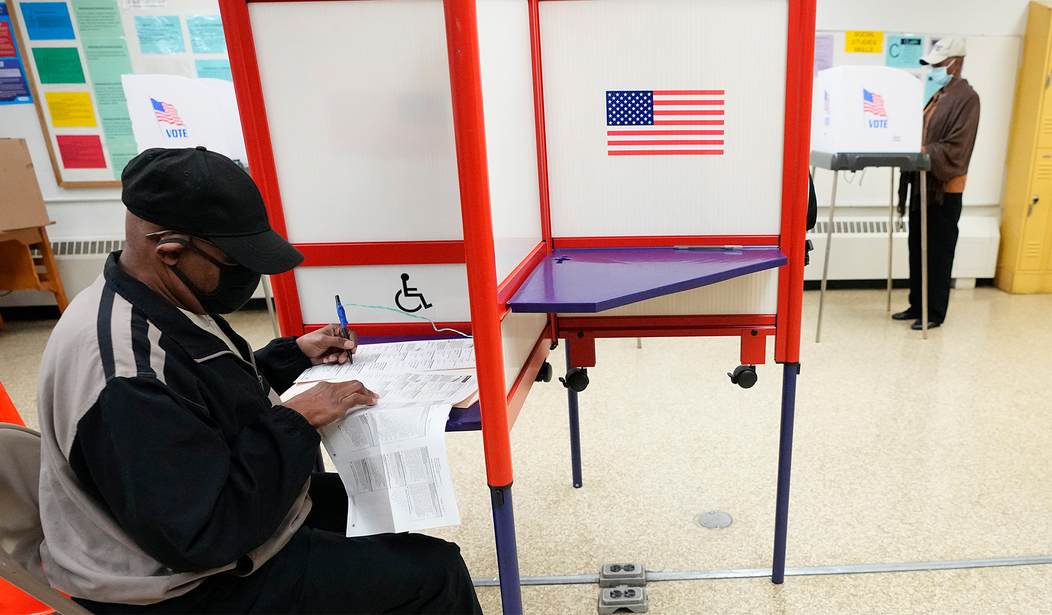With less than a year from the close of the 2024 presidential election, most people think the political landscape could not be more uncertain. Will Trump secure the GOP nomination? Will Biden remain on the Democratic ticket? Will Robert F. Kennedy Jr. get his name on the ballot in all states, or at least those that matter? Will No Labels field a unity ticket? Will Trump’s indictments (which most see as politically motivated) lead to convictions, and will Hunter Biden’s corruption investigations bludgeon his father’s chances?
As conservatives, it’s fun to think about the political earthquake a Biden dropout would cause. That’s unlikely to happen and our latest national poll shows the Democrats’ most viable back up, California Governor Gavin Newsom, is well, not that viable. In a matchup with Trump, he loses by six points and trails with Independent voters by 11 points.
These are big variables. Any mixture of outcomes could drastically change the dynamics of the election. In search of a constant variable, this election really comes down to the tale of two electoral maps based on a new set of battleground states. In previous elections, Republicans eyed states like Ohio, Colorado, New Hampshire, and Florida as battlegrounds ripe for potential victory. The legacy battleground architecture remained relatively unchanged during the globalization years between the George H.W. Bush and Barack Obama presidencies.
Trump’s candidacy changed that.
While 160 million people might vote in this November’s election, only about 50,000 voters spread throughout a new battleground map consisting of Pennsylvania, Georgia, Arizona, Nevada, and Wisconsin, will decide the next occupant of the White House.
Except for Nevada, each of these new battleground states went for Trump in 2016 but flipped to Biden in 2020. Since, Ohio and Florida moved solidly red and are reliably Republican in 2024, mostly because of Trump. Pennsylvania and Wisconsin fueled Trump’s win in 2016 with the “forgotten men and women” constituency bucking both the country club Republicans and urban elitist progressives. These were states Trump truly moved into the ‘tossup’ column where Republicans before him could not.
Recommended
For the “never-Trump” or the “Trump-reluctant” Republicans, it might be fun to imagine someone else like Nikki Haley or Ron DeSantis winning the GOP nomination. But according to pretty much every national poll, including our own, the likelihood to someone other than Trump securing the GOP nomination is as likely as Senator John Fetterman wanting to wear wearing a suit to work.
This new battleground map provides a better path to victory than the legacy map. However, victory might look different with a non-Trump Republican heading the ballot. For instance, if Nikki Haley, who’s currently having her moment for a very distant second place behind Trump, manages to pull off the GOP nomination, she likely wins three of the five battleground states of Georgia, Arizona, and Nevada. And she probably wins more easily in those states than Trump might.
This leaves Pennsylvania and Wisconsin. Both states have Democrat governors with two Democratic senators in Pennsylvania and a party split in Wisconsin. Both ditched Trump in 2020 after swinging his way in 2016. Could Nikki Haley or another non-Trump Republican rally enough voters in those states to secure a win? Here again, not likely.
In this scenario, non-Trump Republicans represent a return to the old legacy map and contrary to what voters in Pennsylvania and Wisconsin perceive as a return to being a part of the unrepresented and forgotten constituency. Without Trump, whether someone like Haley can assume the role of their champion and turn these voters out to the ballot box in the same way Trump has shown is possible, is unlikely.
The new battleground map is more advantageous to Trump and down-ballot Republicans. But the only way to win is by turning out Trump’s forgotten men and women from 2016 while winning over suburban women voters.
Trump’s emergence into politics marked a new era and new map for 2024 – one that’s more favorable to a 2024 Republican victory. As the GOP primary dynamics shake out and regardless the outcome, Republicans must embrace this map, prepare to expand our ground game operations, and expect tight margins. Remember, 50,000 voters in these states will decide this election – every vote counts.
Mitch Brown is a pollster and director of political strategy at Cygnal, the fastest-growing and most accurate GOP polling firm.
























Join the conversation as a VIP Member